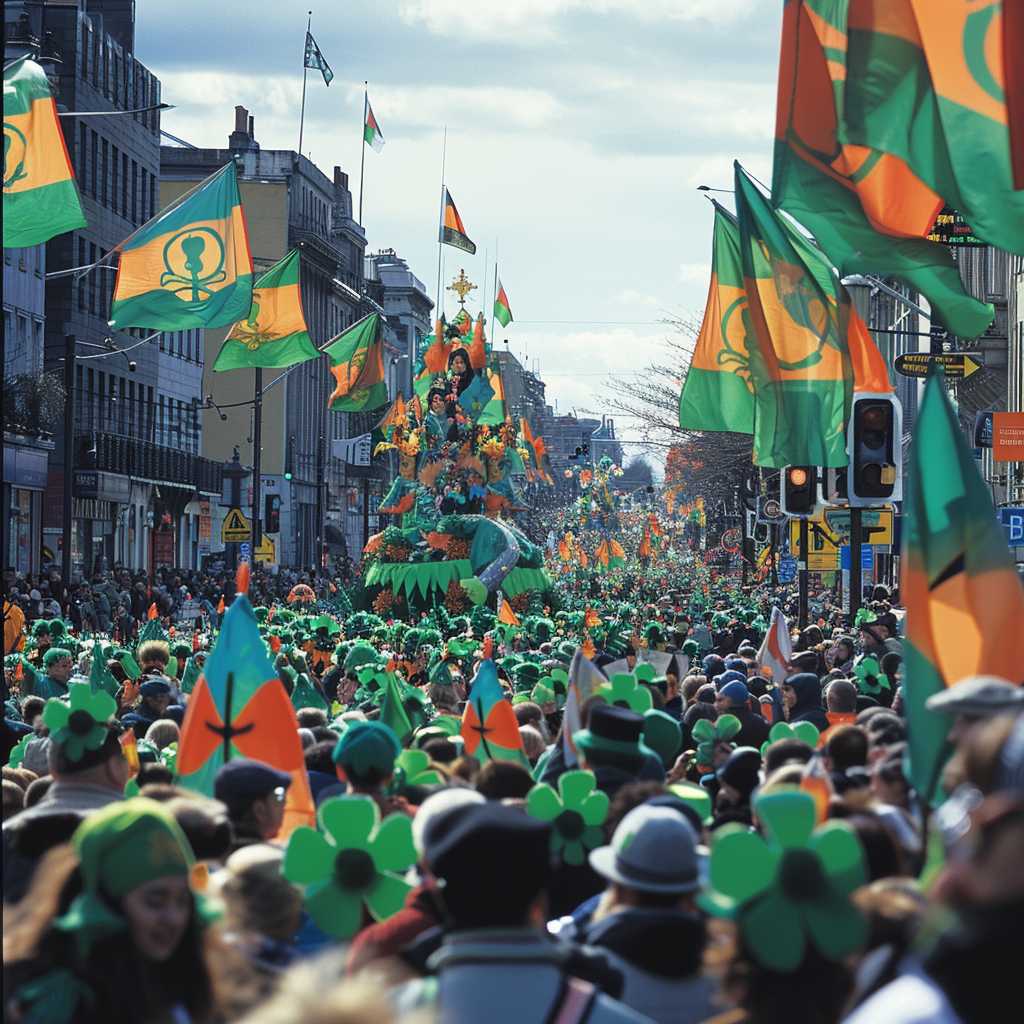Understanding St. Patrick’s Day: A Celebration of Irish Heritage and Culture
St. Patrick’s Day, celebrated annually on March 17th, is both a cultural and religious holiday that pays homage to St. Patrick, one of Ireland’s patron saints, who is credited with bringing Christianity to the Irish people in the fifth century. Evolving over the centuries, the day has become a worldwide celebration of Irish culture with parades, special foods, music, dancing, and a lot of green.
Historical Origins of St. Patrick’s Day
The holiday’s roots can be traced back to St. Patrick himself, who lived during the 5th century. Born in Roman Britain, he was kidnapped at the age of 16 and taken to Ireland as a slave. He later escaped but returned to convert the Irish to Christianity. By the time of his death on March 17, 461 AD, he had established several churches, monasteries, and schools.
Many legends surround St. Patrick’s life, including his explanation of the Holy Trinity using a three-leaf clover, which is why the shamrock is associated with the day.
A Religious Day Turned Global Celebration
Originally, St. Patrick’s Day was a religious feast day observed by Catholics, the Eastern Orthodox Church, and Lutherans as well as some members of the Church of Ireland. It typically involved attending church services and reflecting on the life of St. Patrick and his contributions to Christianity in Ireland.
In the 18th century, Irish soldiers serving in the English military marched in New York City to celebrate their cultural heritage. Subsequent years saw the evolution of widespread public celebrations including parades and wearing green, emblematic of Ireland known as “The Emerald Isle.”
St. Patrick’s Day around the World
Indeed, St. Patrick’s Day celebrations have extended well beyond Ireland’s shores. Cities like New York, Boston, and Chicago are famous for their St. Patrick’s Day parades and various celebratory events enticing not only those of Irish descent but participants across diverse backgrounds.
Internationally, from London to Sydney to Tokyo, people are equally enthusiastic about honoring this day, often dyeing iconic structures green as part of global “greening” campaigns run by Tourism Ireland.
Cultural Significance and Practices
The day is intertwined with various symbols culturally significant to Ireland such as leprechauns—folkloric beings that personify luck—and pots of gold that touch on narratives from Irish myths.
Traditional Irish dancing such as ceilis, feasting on foods like corned beef and cabbage or more traditional Irish fare like soda bread or shepherd’s pie are common ways to embrace the festivity.
Despite variations in local traditions now taking place around March 17th worldwide, all revelers share a singular intention: to celebrate an essence unique to Ireland.
Modern Commercialization
The commercial aspect of St. Patrick’s Day has grown over time with establishments using it as an opportunity for sales promotions over everything from festive clothing items with shamrocks and leprechauns to various green merchandise signifying involvement in holiday merriment.
Equally essential is the holiday’s impact on beer sales – particularly Irish brands like Guinness – with many crowds thronging pubs and bars for celebratory drinks during what many call an unofficial season opener for outdoor socializing in regions where it coincides with warmer weather.
Criticisms and Controversies
St. Patrick’s Day has its share of criticism and concerns mainly regarding excess in alcohol consumption behaviors displayed by some participants and the perpetuation of stereotypes surrounding Irish culture.
Moreover, discussions around authenticity often arise since the day’s promotion by restaurants or events sometimes trivializes or even misrepresents genuine aspects of Irish history and culture.
